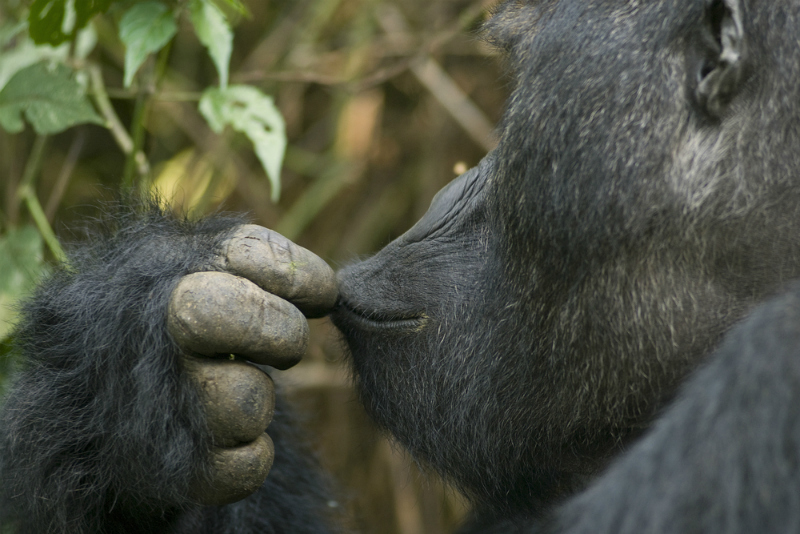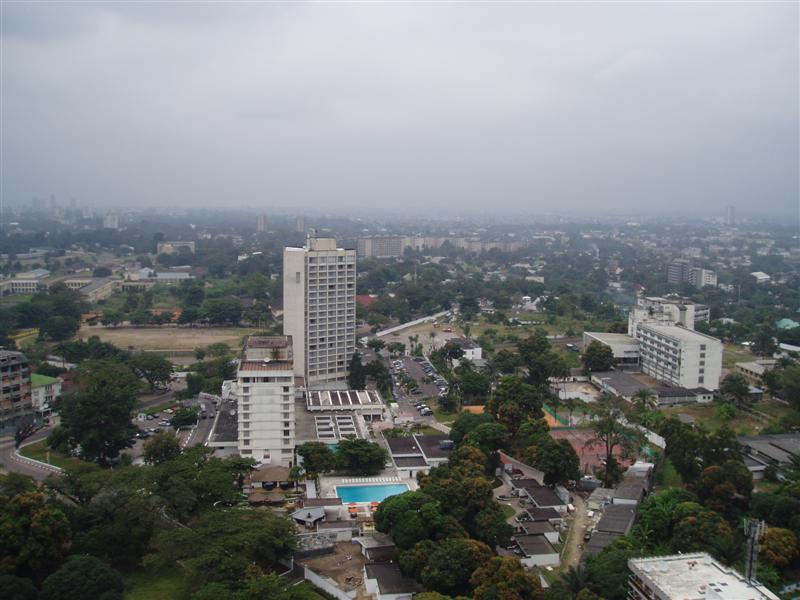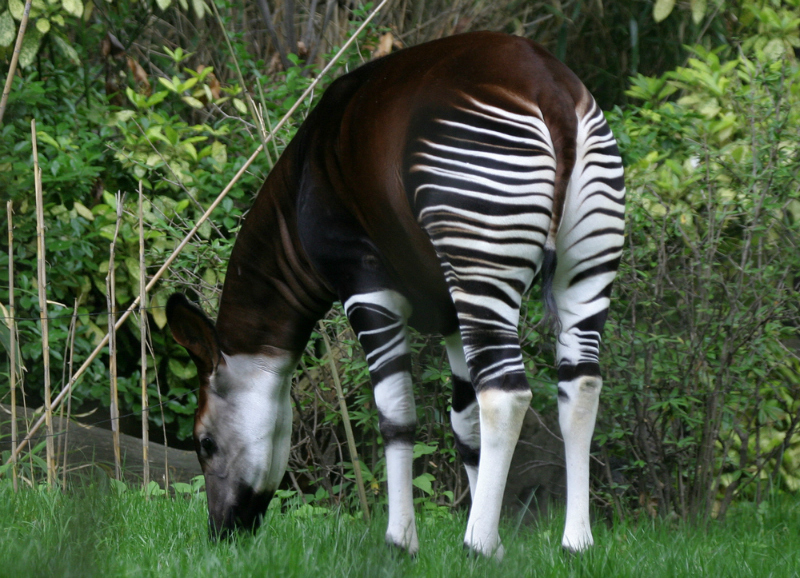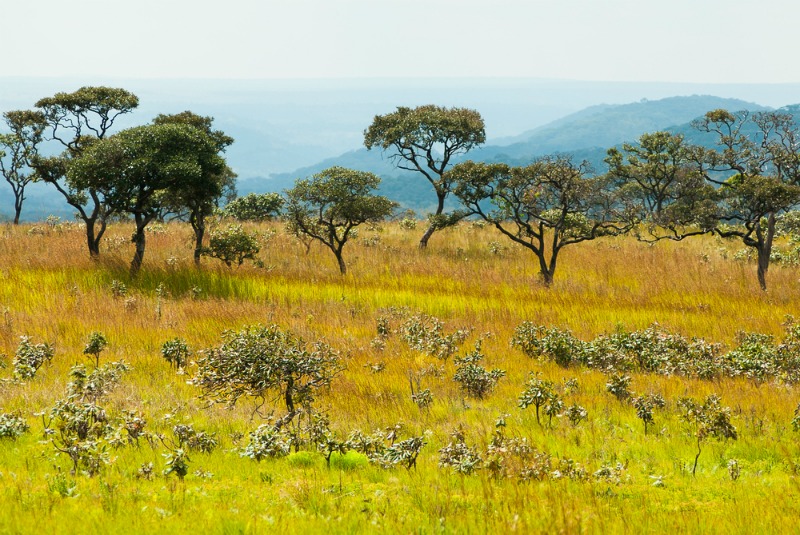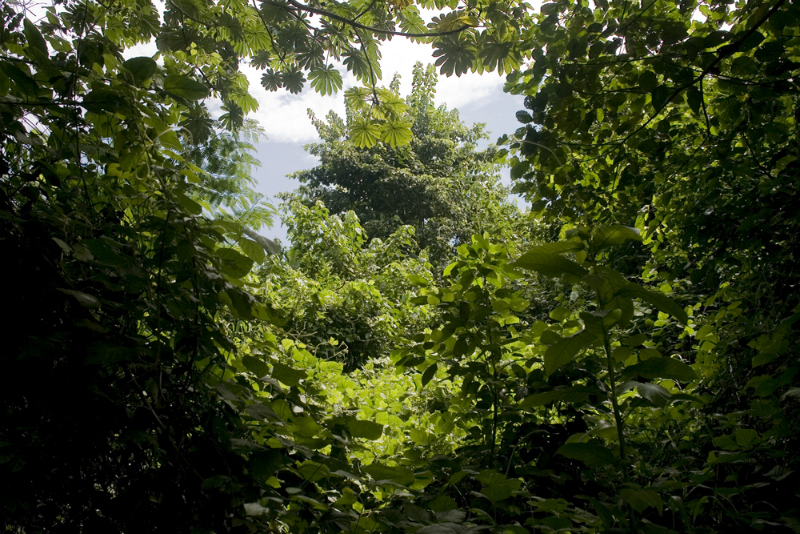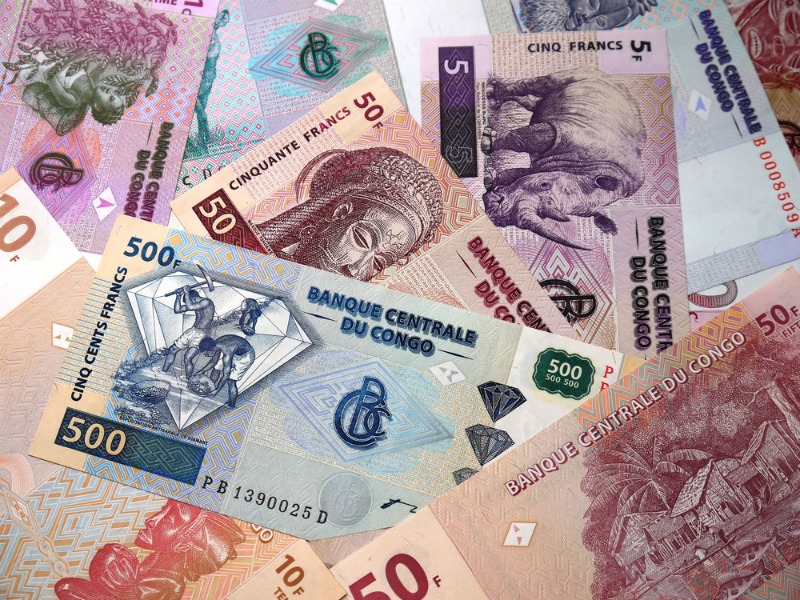Though it’s been wracked by civil war for years, the Democratic Republic of the Congo (formerly known as Zaire) is slowly coming back to a place of stability and peace (as of early 2014), with the help of UN peacekeepers and other efforts. This is great news for travelers, because there is so much to see and do in this vast, mostly undiscovered nation in the heart of Africa. Intrepid travelers can explore the rugged rainforest, see active volcanoes, track endangered gorillas, and marvel at the rich diversity of flora and fauna.
1. Experience Virunga National Park
This UNESCO World Heritage site is not only the most biologically diverse park in Africa, but has incredible variations in altitude and habitat. The terrain ranges from lowland plains to the soaring Rwenzori Mountains (which reach a max height of 16,000 feet). The park’s got 218 mammal species, 706 bird species, 109 reptile species, 78 amphibian species and 22 gorilla species — including 1/3 of the world’s population of endangered mountain gorillas and the world’s largest concentration of hippos. And did we mention it also has the continent’s most active volcanoes, Nyiragongo and Nyamulagira?
2. Cruise the Congo River
The Congo River is still a major form of transport for people and products in a country where roads are scarce and often in bad shape. For visitors, Congo River cruises offer a chance to see the sights and mingle with the locals. You can either take day trips that launch from places like Kinkole Fish Market near Kinshasa, or multi-day river safaris during which you camp in tents by the river at night.
3. Visit Kahuzi-Biega National Park
Also known as Parc National de Kahuzi-Biega, this UNESCO World Heritage site to the west of Bukavu is named for its two extinct volcanoes, Kahuzi and Biega. It’s home to 349 species of birds and 136 species of mammals, including the critically endangered eastern lowland gorillas, a subspecies indigenous to the country. There are between 200 and 300 in the park. and local guides can arrange gorilla-sighting treks (gorillastracking.com and okapitoursandtravel.com are two well-known outfitters).
4. Spend a few days in and around Kinshasa
This rough-edged, sprawling city is by no means a walk in the park (nor is it as pretty as Paris or Cape Town) but it does offer a few points of interest for the intrepid visitor. Wander the city center and pop into the Academie des Beaux Arts (if it’s open), the Musee National, the Marche du Art, or the Marche Central (if you can find it). About 90 minutes south of the city you’ll find the Jardin Botanique de Kisantu, and both the Lola Ya Bonobo Sanctuary and the Lakaya Waterfall are about the same distance west of the city. Stay at the colonial-era Grand Hotel, which was once derelict but is now in the final phases of a much needed face-lift. There are also at least six other decent hotels to choose from.
5. Tour the Okapi Wildlife Reserve
This reserve in the northeast of the country was established in 1992 to protect both the okapi population and the habitat of the Mbuti pygmies, one of the continent’s last forest-dwelling peoples. Located on the Epulu River, the reserve, which is about 1.5 times the size of Yellowstone National Park, is home to 5,000 okapi, 4,000 elephants and 2,000 leopards, plus many other species. http://okapiconservation.org/wildlife-reserve/
6. See Upemba National Park and the Kiubo waterfalls
This somewhat neglected park located in the southeast corner of the DRC has perhaps the most varied terrain of any park in the country: it varies from grassland, to woodlands, to rainforest, to marshes, and wetlands. As a result, it was once home to 1,800 different animal and plant species, though the animals have fallen victim to poaching and indifference. The park is cut through with rivers, lakes, and streams, so it should come as no surprise that there are many waterfalls to be visited, including Kiubo, Kayo, Kawa, Diklongo, and Dipera.
7. Luki Dense Tropical Forest
Also known as the Luki Biosphere Reserve, this stunning coastal forest is characterized by trees up to 35 m tall and 300 years old. It is not well-maintained and suffers from chronic deforestation by locals, so if you want to see it before it’s all gone, now is the time to go!
8. Stay at the historic Karibu Hotel
The Karibu Hotel, which is located on Lake Kivu in Goma, is celebrated for its classic Cape Dutch architecture. Built in the early 20th century, the 100-room property has an old-fashioned feeling that many travelers appreciate. In addition to standard rooms, the hotel offers private bungalows, a pool, tennis court, and restaurant. The hotel is not far from Virunga National Park and the border of Rwanda.
9. Pack Your Rain Gear
The Congo rainforest covers half the country and is the second-largest in the world, behind the Amazon rainforest. It rains 10 months of the year in the DRC, for an average total of 58.3 inches per year. November is the wettest month, with 9.3 inches of rain. July and August make up the dry season.
10. Bring cash, not plastic
Credit cards are rarely accepted in the DRC, aside from a few of the pricier hotels in the capital. So bring lots of cash, and change some into Congolese francs and some into US dollars (both are generally accepted). Don’t change more money that you’ll likely need, through, because you can’t convert francs once you have them.
Related content on AFKTravel:
Mysterious Waters: 10 Things You Didn’t Know About The Congo River
The Muddy Heart Of Africa: A Travellers’ Guide To The Republic Of Congo
Into The Wild: Silverbacks And Sitatunga In The Rainforests Of Northern Congo
Want to discover the finer side of Africa? Sign up for our weekly newsletter.

